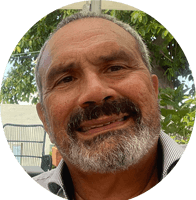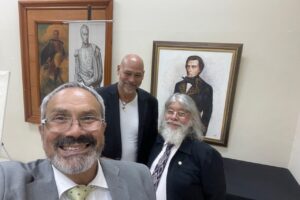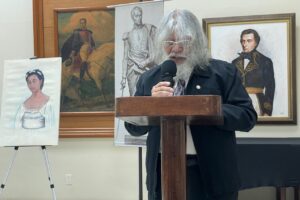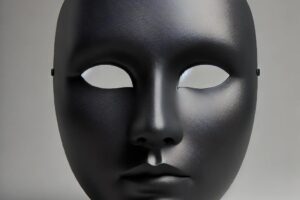
Why the use of the graphic masks.
“Negro con máscara blanca” (“Black man with a white mask”)
A key point to highlight about Manuel Piar is the persistent racial discrimination he faced despite his European features—white skin, blond hair, and blue eyes. His enemies and critics within the independence movement still viewed and treated him as a Black man due to his mixed-race heritage. This racial bias was so entrenched that he was derogatorily nicknamed “Negro con máscara blanca” (“Black man with a white mask”). This phrase encapsulated the contradiction of his identity: though he physically resembled a European, he was never fully accepted as one, illustrating the deep-seated racism in colonial and revolutionary Venezuela.
 Chronology of Manuel Piar’s Life and Struggles (First Attempt)
Chronology of Manuel Piar’s Life and Struggles (First Attempt)
1774 – Birth in Curaçao
Manuel Carlos María Francisco Piar Gómez was born on April 28, 1774, in Willemstad, Curaçao.
He was the son of María Isabel Gómez Quemp, a Dutch mulatto and midwife by profession, and Fernando Piar, a humble man from the Canary Islands. While some genealogical sources suggest that they were married, historical records are inconclusive. Many accounts indicate that their relationship was not formalized, marking Manuel Piar as a natural son.
1785 – Migration to La Guaira
At the age of 10, in 1785, Piar emigrated with his mother to La Guaira, Venezuela. This move marked his first interaction with Venezuelan territory, where his mother sought better opportunities following the absence of Fernando Piar.
1797 – Gual and España Conspiracy and Flight to Curaçao
Piar became involved in the Gual and España Conspiracy, a movement led by Manuel Gual and José María España, aimed at achieving Venezuela’s independence. Following the repression of the movement, Piar fled with his mother back to Curaçao to avoid arrest.
1798 – Marriage to María Martha Boom
On April 8, 1798, Manuel Piar married María Martha Boom in Willemstad, a woman of European descent. From this union, they had two children:
•María Isabel Piar Boom, born in Willemstad.
•Juan Piar Boom, also born in Willemstad.
Manuel Piar’s Extramarital Relationship and Birth of Carlota Piar (La Guaira)
After his marriage to María Martha Boom, while residing in La Guaira, Piar had an extramarital relationship with an unidentified woman, from which his daughter was born:
•Carlota Piar Gómez
María Isabel Gómez and Her Second Marriage
After moving to La Guaira, Piar’s mother, María Isabel Gómez, remarried Pedro Columba, a Curaçao-born resident. From this union, three children were born, half-siblings of Manuel Piar:
1.Pedro Columba Gómez
2.Juan Columba Gómez
3.María Teresa Columba Gómez
Military Feats of Manuel Piar
Manuel Piar stood out as one of the most brilliant leaders of Latin American independence. Throughout his career, he participated in 24 military victories, including crucial moments such as the liberation of Guayana and his role in Curaçao during “Día di Viktoria.”
1804 – Día di Viktoria (Battle Against the British in Curaçao)
On October 1, 1804, Piar led the local forces in the defense of Curaçao during a British invasion attempt. This event, known as “Día di Viktoria”, solidified his reputation as a brave military strategist.
Timeline and arms Activities in Haïti coming soon
1810 – Re-Joining the Venezuelan Independence Cause
In 1810, after the formation of the First Republic of Venezuela, Piar joined the independence movement, bringing with him his military experience from Curaçao. This was a turning point in his life, where he took an active role in the fight for freedom.
Chronology of Important Battles
1.Defense of Curaçao (October 1, 1804): “Día di Viktoria.”
2.Battle of Maturín (April 11, 1813): Successful defense against royalist troops.
3.Battle of El Juncal (September 27, 1816): Crucial victory in the Eastern Plains.
4.Battle of San Félix (April 11, 1817): Decisive for the liberation of Guayana.
1817 – “Trial” and Execution
On October 17, 1817, Piar was arrested and accused of treason by Simón Bolívar. He was executed in Angostura after a military trial, leaving behind a complex and heroic legacy.
2022 – Piar legally and Official Rehabilitation Ceremonies in: Curaçao – San Felix Dayana and the National Pantheon in Caracas.
 Summary of His Legacy
Summary of His Legacy
Manuel Piar is remembered as the Liberator of Guayana, a key strategist in Venezuela’s independence, and a figure who symbolized the fight for equality in an era marked by racism and discrimination. His life and tragic fate continue to spark debate, highlighting his fundamental role in Curaçao , the Caribbean and shaping the Republican Venezuela.
Tico Vos is a professional photographer, producer, and tourism specialist. He has been documenting the History, Culture, and News of Curaçao. This site is a documentation of the history of Manuel Carlos Piar.

 Chronology of Manuel Piar’s Life and Struggles (First Attempt)
Chronology of Manuel Piar’s Life and Struggles (First Attempt)




 Summary of His Legacy
Summary of His Legacy






